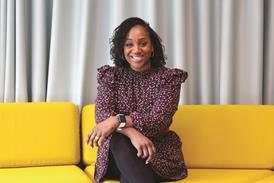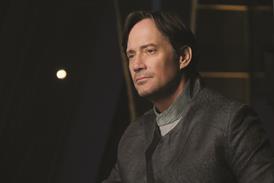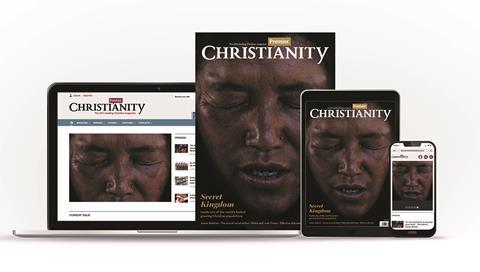
In 2015, NBC News reported that pornography was a staggering $97bn industry. Pornography is big business, but contrary to popular belief, global revenues are declining. Online pornography is mostly free and when combined with improved technology, the result is growing demand.
According to the accountability software company Covenant Eyes, one in five mobile internet searches is for porn, and by 2017 a quarter of a billion people will be accessing adult content using their mobile phone or tablet. Whether we like it or not, pornography is now mainstream and it’s here to stay. But just because porn is easy to access and mostly free, that doesn’t mean there’s not a price to be paid. Porn is not a harmless recreational pleasure as some assume; for many users it has cost them dearly.
The fight back begins
Christian communities and feminist groups have been campaigning against pornography for many years. They've argued that pornography distorts our view of sex and relationships. But since the advent of the internet, there are other voices – some from quite unexpected places.
Most recently the glamour model and infamous beach babe from Baywatch, Pamela Anderson, featured on British television to launch her “sensual revolution” to save couples’ sex lives. She states that pornography has a “corrosive effect on a man’s soul and on his ability to function as husband, and, by extension, as a father”.
Earlier this year Terry Crews, the American actor and former American football player, talked bravely on CNN about his “dirty little secret”. He shared how rehab saved him from porn addiction and warns in his video diaries that porn “changes the way you think about people. People become objects. People become body parts; they become things to be used rather than people to be loved”.
Another unlikely anti-porn campaigner is the journalist and former editor of lad mag Loaded, Martin Daubney. Following his much acclaimed Channel 4 documentary, Porn on the Brain in 2013, Daubney has written many articles warning people about the dangers of porn. He described porn as “the most pernicious threat facing children today”. And, of course, there’s the comedian, actor and activist Russell Brand whose YouTube video speaking out against porn went viral, receiving nearly 3 million views. During his usual Brand-style rant, he describes how pornography exaggerates people’s expectations of sex and gives personal testimony on the impact it’s had on his life.
Whatever your view of these celebrities, I for one am thrilled to hear their voices mixed with others who know first-hand the true cost of porn. As someone who has specialised in working with people with sex and porn addiction for the past 15 years, I know that the biggest barrier to seeking help is the secrecy and shame that surrounds porn usage. To date, most anti-porn campaigns have been based on morality, focusing on young people and what price they’ll pay for a sexuality that’s weaned on internet porn. And while we must remain mindful of the moral debates, what is missing is the discourse around the health costs – the emotional, physical and relational costs paid by both young and old.
The cost to young people
In June this year, the NSPCC and the Children’s Commission published an extensive report titled I wasn’t sure if it was normal to watch it… The research undertaken by Middlesex University included a survey of children aged 11-16 and showed that by the age of 12, 28 per cent had viewed pornography and by the age of 15 that had risen to 65 per cent. In terms of inadvertent viewing or deliberately seeking porn, the split was about 50/50. The report went on to say that those in the younger age groups experienced a mixture of curiosity, shock, shame and confusion, but after repeated viewings the older age groups reported more positive emotions including excitement and arousal.
He chooses to have sex with women onscreen, rather than make love to me
Most young people did not want to emulate what they had seen in pornography and described it as unrealistic, but that view also changed with progressive exposure. The report concluded that there needs to be more education, tighter controls and help available for young people who are worried about their internet use. Another paper that was published this year in The Journal of Sex Research was a review of 20 years of research on adolescents and pornography. The authors conducted a systematic empirical review of 73 academic papers and concluded that pornography use was associated with more permissive sexual attitudes, stronger gender-stereotypical sexual beliefs and more sexual aggression, both in terms of perpetration and victimisation.
In August this year, BBC Newsbeat made headlines when they reported the impact heavy pornography use was having on young people’s sex lives. It reported the surge of young men experiencing erection problems and in their revealing video Brought Up on Porn, young people talked openly about the negative impact porn has had on their sexuality and relationships.
There’s no doubt that research in this area will continue and governments around the world will be tasked with ensuring there are tighter controls on accessibility. But as anyone not brought up in the internet age knows, young people are the computer experts and the challenge of getting around the latest parental controls may just heighten the experience. Children and young people need education, not just on healthy sexuality, but also on the reality (or rather the unreality) of porn and the potential impact it could have on them.
The cost to emotional health
A few years ago I conducted a survey of 350 people with sex and porn addiction as part of my research for my first book, Understanding and Treating Sex Addiction (Routledge). This survey confirmed what I was seeing in the therapy room, but nonetheless made disturbing reading: 49.8 per cent reported mental health problems as a result of their behaviour, such as anxiety and depression; 65 per cent struggled with low self-esteem; 70 per cent felt shame and 19.4 per cent had experienced a serious desire to commit suicide. It angers me when people laugh at the idea of sex and porn addiction, saying thoughtless things like “that’s an addiction I’d like to have”. If only they knew the personal pain and anguish it can cause.
Regrettably, many people don’t come forward for help with compulsive porn use or sexual behaviours until the bottom has fallen out of their world. Many experience what’s known as ‘escalation’, moving from soft-core to hard-core as tolerance increases, or succumbing to the temptation of so many advertisers on porn sites for sex-chat, illicit encounters or prostitution. Unlike other addictions, this one is often invisible to the world and most people continue to function in their day-today lives. There’s no hangover, no comedown – just a pervading sense of shame and isolation. Pornography is often not recognised as compulsive until someone fails to stop, but with no warning that this can become an addiction, many will have no idea how much their brain has been rewired, and how difficult stopping will be.
Advice for churches
Problems with porn use thrive in secrecy and shame, so let’s get bold and start talking about it. Consider:
? Including porn when talking about worldly distractions
? Praying in small groups and prayer groups for anyone who struggles with porn
? Devoting a Bible study evening to what the Bible says about sexuality
? Inviting a speaker to talk about porn at a men’s or women’s breakfast
? Providing education and resources for youth groups
? Having resources available for people who are struggling with porn
The cost to relationships
Pornography hurts not just those who view it, but also their partners. Many partners feel threatened by the perfect bodies so often portrayed on-screen. Bodies that perform the sexual act with passion and vigour. Bodies whose sole purpose is to excite and entice. But even those blessed with positive body confidence soon discover they can never compete with the infinite variety that porn provides. When a partner lives with someone who views porn, whether that’s recreational or compulsive, they often experience profound feelings of betrayal, as libido for partnered sex dwindles and arousal becomes increasingly difficult.
When partners continue to secretly watch porn, their spouses feel abandoned, rejected and deceived. While physical adultery may not have taken place, porn viewing is undoubtedly a breach of trust and fidelity. As one woman painfully shared with me, “he chooses to have sex with women onscreen, rather than make love to me”. Depression and anxiety are common in partners of porn viewers.
For many couples, ongoing pornography use breaks their relationship. As intimacy erodes and trust is eaten away, couples drift further apart until separation may seem like the only option. According to Covenant Eyes, 56 per cent of divorce cases involved one party having an obsessive interest in porn, and in my survey of those struggling with sex and porn addiction, 46 per cent had lost a relationship and 71 per cent knew they were at risk of doing so.
The cost to Christians
According to the 2015 survey conducted by Martin Saunders for his article in this magazine, 75 per cent of Christian men and 20 per cent of Christian women view porn on an ongoing basis. Porn is not a secular problem. We can all be tempted to seek comfort and fulfilment from the world, forgetting that only God can truly satisfy.
Viewing porn is undoubtedly a sin, but it’s not a sin that’s worse than any other, and like all sin, it comes at a cost. In addition to the emotional, physical and relational price, there’s a cost to our sense of personal integrity and how close we can feel to God.
There’s no hangover, no comedown – just a pervading sense of shame
The antidote to sin is grace and faith. Grace tells us that nothing can separate us from the love of God and promises us that when we acknowledge and confess our sins, we will be brought to wholeness. Faith assures us that God is in control and he knows our needs, and can and will provide for them. And as Christians, whether we’re struggling with porn use ourselves or helping others in need, or if we’re engaging in social discourse about the problems with porn, then we need to follow Christ’s example. Remember Jesus with the woman at the well? He didn’t judge or condemn – he simply invited her to seek something better.
It’s hard to address the issue of pornography without it being turned into a moral debate. My aim is to help people consider the emotional, physical and relational cost. Porn is damaging many people’s lives – young, old, male, female, married, single. People from all sexual orientations and all faiths. Let’s get porn out of the closet and start talking about it with compassion and grace.
Paula Hall is a sexual and relationship psychotherapist
Further help and resources
Confronting Porn - A comprehensive guide for Christians struggling with porn and churches wanting to help them.
Naked Truth - Opening eyes and freeing lives through education, awareness and recovery programmes nakedtruthproject.com
Paula Hall & Associates - A team of therapists providing addiction recovery services around the UK paulahall.co.uk






























